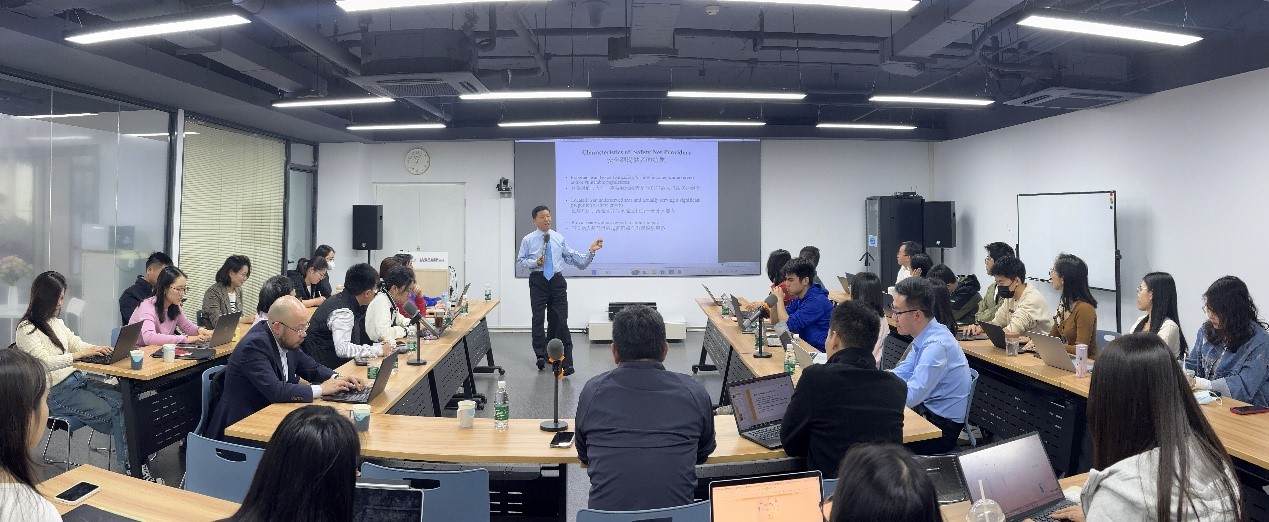On April 12, 2024, Dr. Shi Lei Yu, Professor at the Johns Hopkins Bloomberg School of Public Health and Director of the Johns Hopkins Primary Care Policy Center, gave a lecture called “Current Status and Trends of the US Healthcare System" at the Peking University Institute for Global Health and Development (GHD). Professor Liu Guoen, Director of GHD, oversaw the lecture. Some faculty and students from Peking University’s GHD, School of Economics, and School of Public Health participated in the exchange and discussion.

Professor Shi's lecture focused on the status and features of the US healthcare system, outlining the stakeholders, composition, and management models of the healthcare insurance system in the United States. The stakeholders in the US healthcare system include the government, employers, healthcare workers, patients, and insurance companies. Despite the high annual healthcare expenditures in the United States, none of the stakeholders are entirely satisfied. Meanwhile, the healthcare insurance system in the United States comprises commercial insurance, Medicare for the elderly, Medicaid for the uninsured and low-income individuals, as well as special groups such as veterans and Native Americans. Commercial and elderly insurance primarily manages medical care through a managed care model. Managed care integrates medical care and insurance, where insurance companies own hospitals and employ physicians to provide medical services while selling healthcare insurance.
The managed care model has several key characteristics. First, integrating hospitals and insurance reduces the incentive for hospitals to provide excessive medical services to patients, thus aiding in cost control. Second, the model establishes a gatekeeper system based on primary care. Third, it adopts optimized payment methods to drive hospitals to improve performance. Fourth, the managed care model bundles payments for the entire course of a disease, focusing not only on managing treatment during hospitalization but also on prevention, rehabilitation, and home care. These characteristics have enabled the implementation of the managed care model to significantly slow the growth of healthcare costs in the United States and facilitate the rapid development of primary healthcare.

Professor Shi also discussed five major trends in the development of the healthcare sector in the United States, including "big health," "big integration," "big value," "big data," and "big participation." His insights provided new perspectives and approaches for examining the composition and development trends of the US healthcare system. Professor Shi provided explanations and engaged in thorough discussions with the participants and provided insightful explanations to the questions raised regarding policy design and institutional details.
(Interpreted by Waverly Shi)